A BLACK PORTER ON WHITE 12TH ST (1901)
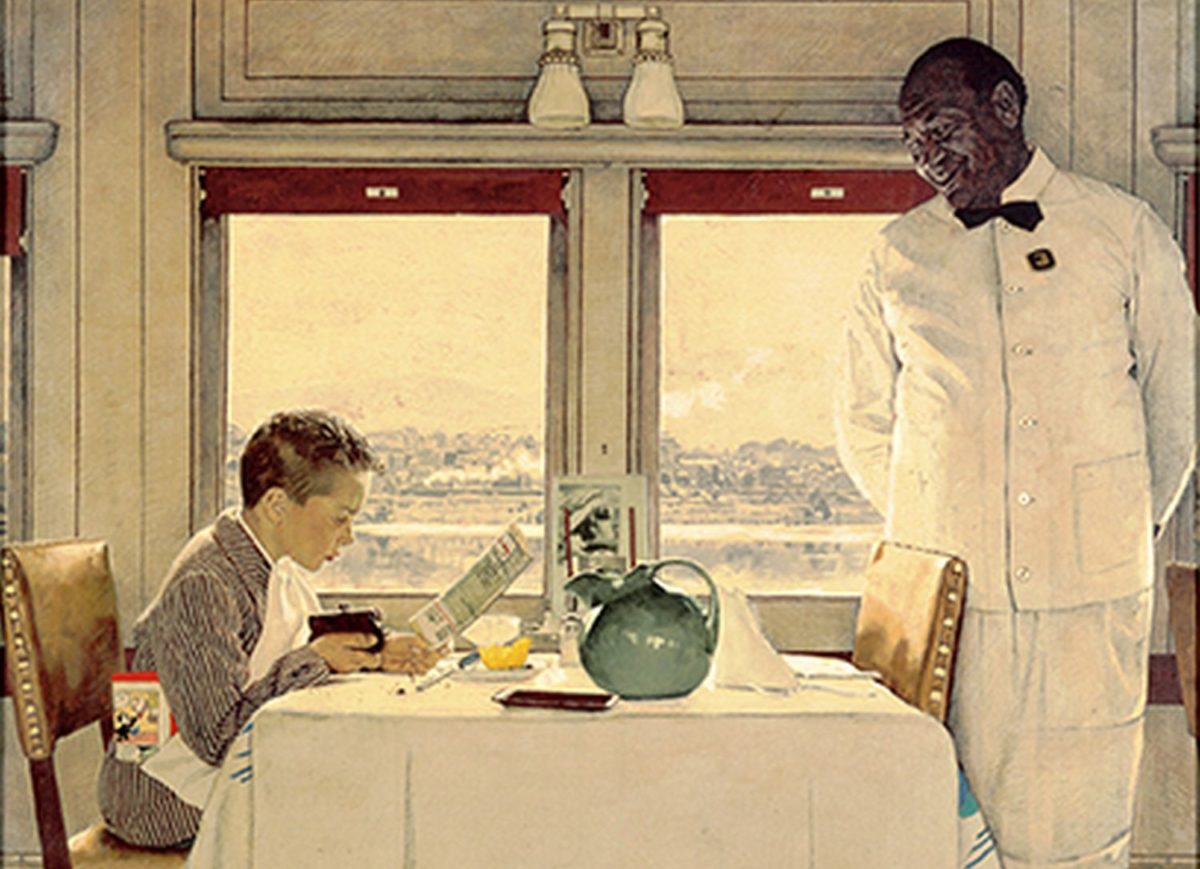
Brownstone Detectives investigates the history of our clients’ homes.
The story you are about to read was composed from research conducted in the course of one of those investigations.
Do you know the history of YOUR house?
********************************************************************************************************************************
Back in Victorian Brooklyn, segregated neighborhoods were the norm.
The only blacks that most whites expected to see on their streets were those who worked there as maids or who participated in other working class trades. Blacks – commonly referred to then as “coloreds” or “Negroes” – rarely lived cheek-and-jowl with whites.
On the rare occasion that a black family moved into a white neighborhood, an enormous amount of pressure was usually placed upon the family to move out immediately. It was for this reason that most neighborhoods remained segregated by the turn of the century.
One such “Negro” family moved into the Gowanus section of Brooklyn in 1901, at No. 198 Twelfth Street, between Third and Fourth Avenues.
It was not long before the family’s new white neighbors started to show their own colors as they began – very publicly in the newspapers – to register their extreme displeasure and disgust at the “intruders” on their block.
This was a very highly charged story, to be sure, but was it factual? Or, was it generated to sell a house?
The Brownstone Detectives investigated…
WHOLE BLOCK EXCITED OVER ADVENT OF NEGROES…
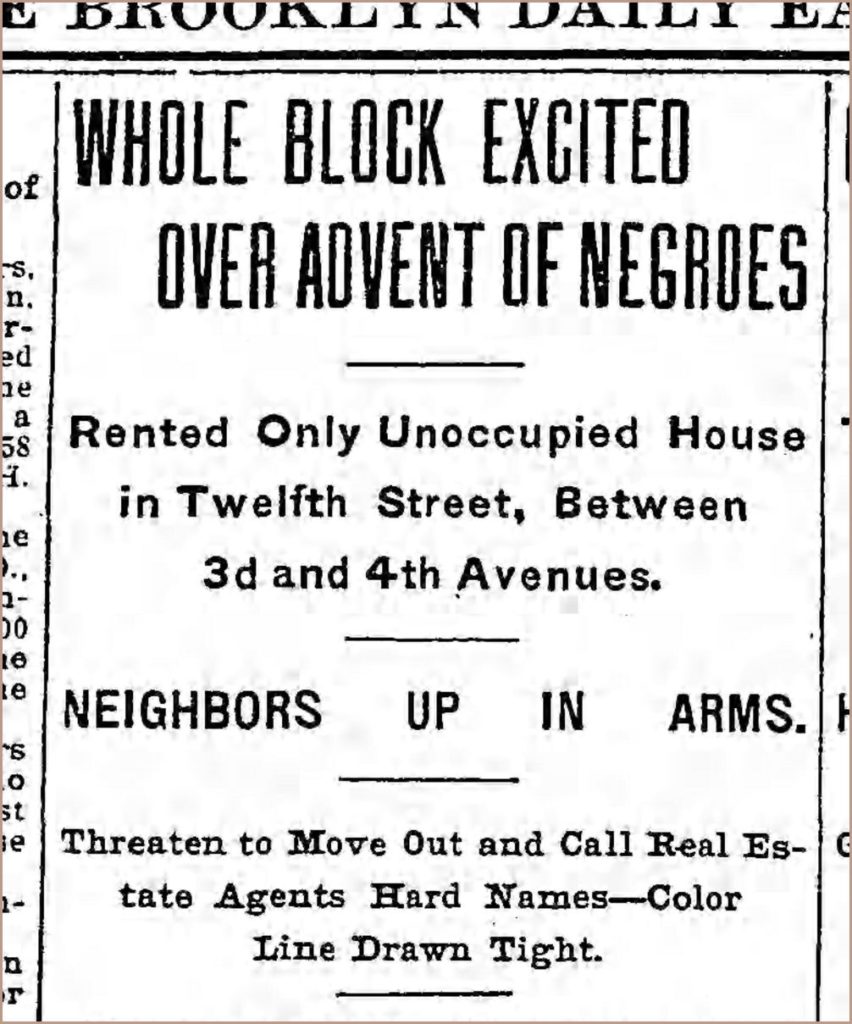
This story took place in the summer of 1901. Reported by the Brooklyn Daily Eagle, it seemed a sensationalist piece, one better fitted to the New York World. No follow-up stories were printed and little else could be discovered about how this particular story ended.
Much of the story seemed, at first blush, to be made up. While the places existed and the story came across mostly as true, it appears that much of the tale was not what it seemed.
A reporter for the Eagle filed his story in late August of 1901. It told the account of a black family moving into a traditionally white neighborhood. To the chagrin of the white neighbors, the black family – which rented the house through a local real estate agency – could not be cowed into departing. Actually, quite the opposite – they were determined to stay. The white families, though, were just as determined to figuratively, it seemed – according to the colorful, if threatening, words of one resident – “burn the colored folks out.”
The block of Twelfth street in question, to which the black family moved, had been possessed of a quality which, accordingly, had been grounds for its occupants to boast of a certain exclusiveness – it was one of the only asphalted street in South Brooklyn south of Ninth street. Such an improved thoroughfare meant cleanliness, or at least an absence of dirt and mud.
But now that exclusiveness – and that asphalted street – had been tarnished.
“There are many manifestations of indignation,” noted the Eagle, “which threatens to create great disturbances in the quiet residential Twelfth street.”
ENTER ONE GEORGE RHUE, COLORED PORTER, PULLMAN CO…
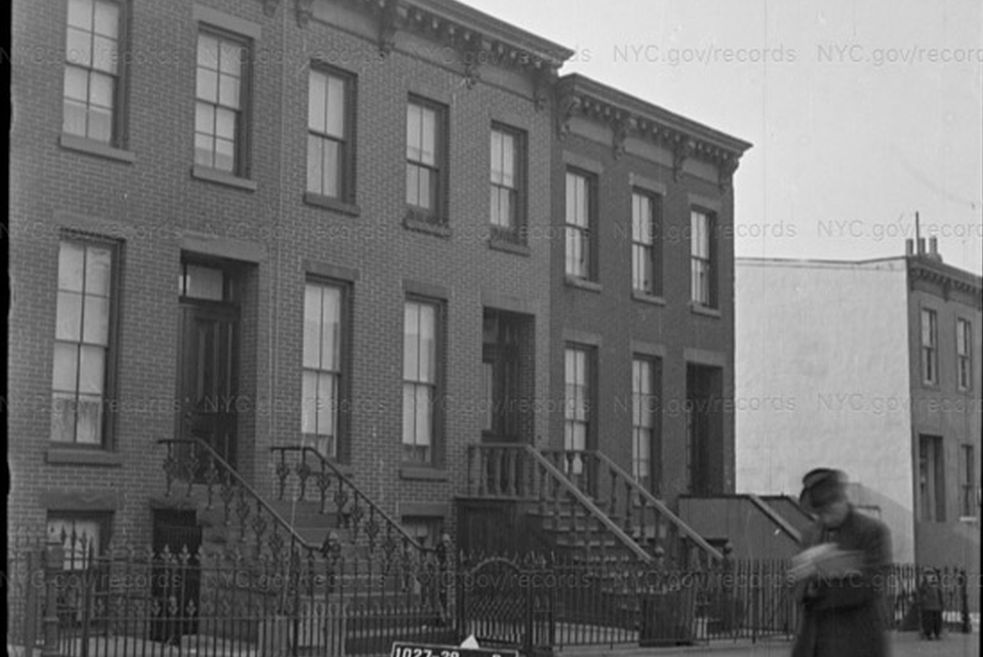
According to the Eagle, the cause of this “manifest of indignations” was one George Rhue, “a colored man, head porter for the Pullman Palace Car Company.”
Rhue, his wife and two children had moved into No. 198 Twelfth Street in mid-August of 1901, “or at least the rent began from that time.
“With them,” mentioned the Eagle, “came an old colored woman named Mrs. McCullough, her daughter and two boys, who were to occupy the top floor.”
The whole house, readers were to understand, would be occupied by these colored outsiders.
“The intruders,” as the Eagle referred to them, had moved from 221 Thirty-fourth street, where they had lived for several years. The reason “the colored people” moved into Twelfth street, was that Mr. Rhue, “an intelligent, well dressed colored man,” had labored for years to make a home for himself and family and that he thought that the influence of “permitting his children to mingle with the white children would be beneficial,” and that his wife, during his absence on the road (between New York and St. Louis), “would be in a locality that would insure safety and respect to her and peace of mind to himself.” To this end, the Eagle noted, Rhue had gone to the real estate offices of Driver & Bowie at No. 453 Fifth Avenue, and hired the house on Twelfth street.
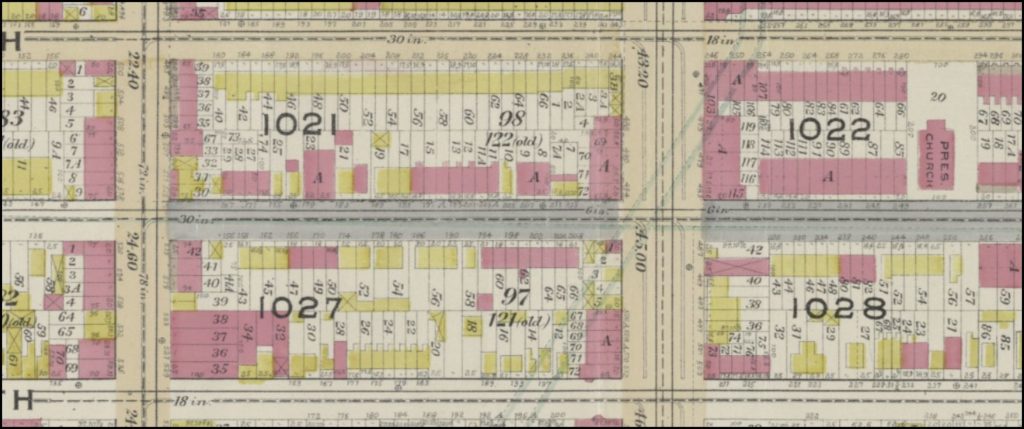
This advent in the “swell” Twelfth street section was hailed as an “intrusion” and met with bitter protests from all the residents, “especially the woman side of the house.”
Accordingly, the agents “were besieged with threats, supplication and requests for the immediate removal of the Rhue family from the street. But Mr. Bowie quietly told all his visitors that the Rhue people enjoyed an unexceptionally good reputation and he saw no reason, as long as they did right, to dispossess them.”
Some of the residents of Twelfth Street began to suspect the less-than-whole intentions of Bowie & Driver, noting that No. 198 was “the only house in the block that is not occupied by the owner.” Thus, many began to think that “the reason why Driver & Bowie rented it to the colored family was to compel some of the residents to purchase the property.”
The Eagle certainly “mixed the pot” when they noted that “Mrs. Rhue, a pleasant faced, intelligent octoroon (according to Oxford, “a person who is one-eighth black by descent”), formally took possession of the house yesterday morning, having just returned from Somerset County, where she has been spending a few weeks in the mountains. She seemed much surprised when informed by an Eagle reporter of the objection raised to her living on the block.”
Then the following line was added: “(Mrs. Rhue) said that her husband was a great deal better than a good many white people and she would spite ‘those white ladies’ by staying in the house until she got ready to leave.”
Was this meant to antagonize? If so, it probably worked…
THE BLOCK’S NATIVES BECOME RESTLESS…
The whole point of the article seemed to be the indignant state of the members of the block at the fact that on their high class street there were now blacks amongst them. No one, it seemed was shy to express these emotions – especially the women on the block – and the Eagle reporter was ready with his pencil to record them.
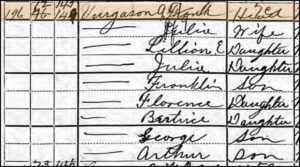
Next door to No. 198 lived “F. A. Furgeson, a wealthy real estate man, and family. Mrs. Furgeson seemed quite talkative, and said had her husband known that colored people were to be her next door neighbors, she would have bought the property. She indignantly scored the real estate people.”
According to Mrs. Furgeson: “Colored people are not necessarily bad, but one can understand the undesirability of such neighbors. I have told my husband that I am going to move.”
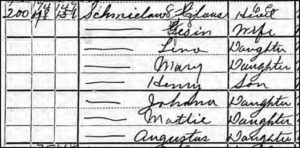
On the other side of the Rhue house, at No. 200, lived “C. Schmeier and family.”
According to Mrs. Schmeier: “Had I known those folks were coming in that house my husband would have bought that house, although it is in a frightful sanitary condition. These people may be respectable and all that, yet there is a serious objection all round. We do not want our children to associate with colored people; I don’t care what the papers say. I won’t live in the same street.”
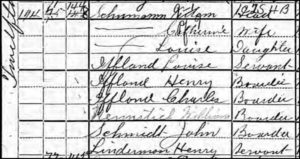
At No. 194 lived “the well known ice dealer, A. C. Schumann.”
Mrs. Schumann was “too angry” to say much, but she managed to get out that, “It is an outrage.”
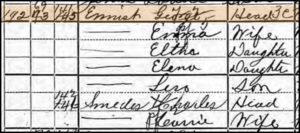
George Ernest, a truck driver, owned and lived with his family in No. 200.
Mrs. Ernest said: “American families do not care to have their children mingle and associate with negroes. I will certainly move from the street. Why, what would my friends think of me, living two doors from colored people. It is a terrible thing. Why, I actually saw the old negress wearing a red bandanna handkerchief sitting in the window where everybody could see her.”
THE REALTOR RESPONDS…
Bowie, the agent, who rented the house, said that “he had investigated the antecedents of the Rhue family and found them to be desirable tenants and he rented the house for $25.
“Yes, the people in the block have been after me, especially Mr. Furgeson, who is a real estate man, and who demanded that I put the Rhue family out,” said Bowie. “I told him that the whole business was a business transaction and so long as these people behave themselves, and live up to their agreement they will remain.
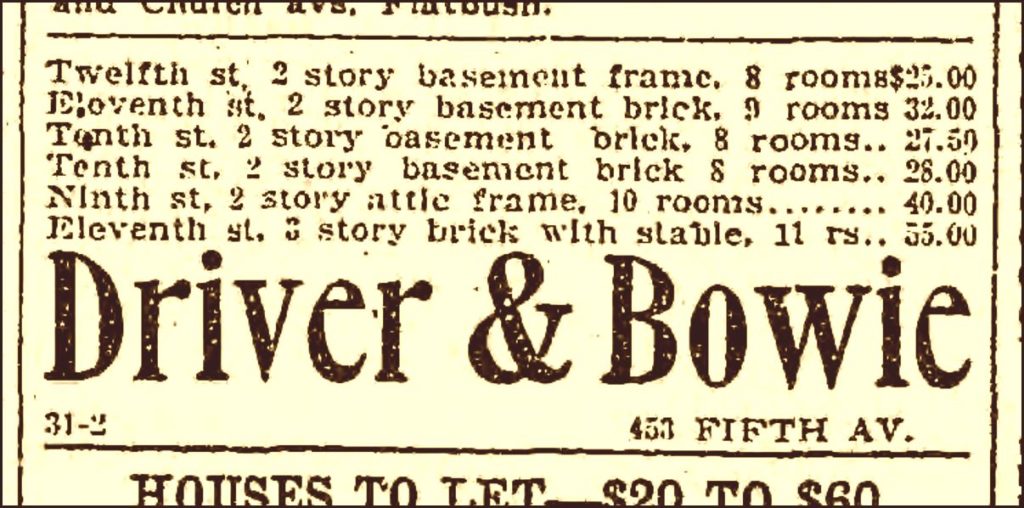
“Why don’t some of those people buy the house? I’ll sell it cheap to them. Two ladies told me last night that the colored people seemed to be quite respectable. No, I will not tell you who owns the house.
“But this much I’ll say, the Rhues will stay in the house as long as they live up to their agreement. The people in the Thirty-seventh street speak highly of the Rhue family. Rhue gets a splendid salary from the Pullman Company and his house is splendidly furnished. He left last night for St. Louis.”
The people in the block declare they will “keep the matter on fire,” noted the Eagle, until “they burn the colored folks out of the street.”
An ominous statement for sure…
BUT DID THE REALTORS REALLY WANT TO SELL?
While similar incidents most assuredly occurred quite often throughout the entire country, there were several points within the story that led us to wonder if this one were the genuine object.

It is true that No. 198 did become vacant in May of 1901 when the former tenant of the house a musician, according to the 1900 Census, by the name of Willard Groom, who, according to his obituary the following year, moved with his family in that month to Chicago, Illinois, in order to open a music publishing house.
Additionally, it was only months before that date that it appears that the owner of the house was attempting to sell the property, using as their realtor, ironically, an “F. A. Vurgason,” who was featured in the article about the Rhues. After Vurgason did not sell the house, it seems that the owner used realtors, Driver & Bowie, to find a tenant again.
However, a number of points lend credence to the suspicion that the realtor, Bowie, was really more interested in selling No. 198 for his client, the owner of the house, than renting it, as he professed, to a “colored family.” Indeed, it may have been that Bowie paid Rhue and his family – as well as another black family – to move into No. 198 in order to force the sale of No. 198 to a member of the block.
- Realtors want clients. Blockbusting would have tended to drive potential clients of Driver & Bowie away (particularly at the turn of the century when this tactic was not yet being used). Realtor Bowie would not likely have been renting a property to black families in an all-white Gowanus neighborhood, particularly since he, himself, was living nearby with his family on Tenth Street.
- Rhue did not work for the Pullman Company. Rhue may have been a porter, but he was certainly not a porter for the Pullman Company. No records could be found of his ever working for the company, let alone being its head porter. Rhue, rather, was a porter for a shoe store, according to the 1900 Federal Census. This was a big difference, since he would have, as head porter for the Pullman Company, been making a decent salary, one more than commensurate with the rents in this Gowanus neighborhood ($25/month). As a shoe store porter, however, he would not have been able to afford to live in such a neighborhood.
- The Rhues were childless. According to the story, George Rhue moved into No. 198 with his wife and two children. According to the 1900 Federal Census, however, George and Myra Rhue, 22 and 23 years old, respectively, had, at the time, had no children.
- Names were wildly misspelled. These misspellings seemed less like the common reporters’ mistakes of the day; they seemed more likely an effort to cover a person’s name. “F. A. Furgeson,” for instance, was actually “F. A. Vurgason.” The “Schmeier” family was actually, the “Schmielau” family.
- Twelfth Street had more renters than was reported. The Eagle article noted that, except for the tenants at No. 198, everyone who lived on the block owned their property. A quick check of census records for the block, though, showed that this was not true. Actually, many residents were renters, including one referred to in the article as an owner – George Ernest.
All of these points aside, no one and nothing survives to tell the final truth regarding this tale. As such, we leave the decision up to our readers whether the rental to a black family on a white block was due to the “simply business” attitude of the realtor, or whether the rental was part of a ploy to force the sale of a house.
All that said, another question we might ask is, “Who were the victims here?”
POSTSCRIPT
During the Depression of the early 1930s, after the Eighth Avenue Express “A” subway line was extended to Brooklyn, unscrupulous speculators and investors began to use a similar tactic to the one in the story. Here they would force down the prices of properties – which they would buy, themselves – and that they would resell to black families at a great profit. Known as “blockbusting,” the technique would usually include a speculator or realtor showing properties for sale in a certain white neighborhood to a black family, giving the white families the impression that they needed to sell their houses before blacks moved into the neighborhood and the values of their homes dropped drastically. The speculator would, subsequently, visit the homes of the white owners on the block and encourage them to sell before the prices dropped too much. This tactic brought about “white flight,” the almost en masse movement of whites to the suburbs. In these situations, like in the story above, black families were used to bring wealth to white speculators, even though, these black families would, themselves be taken advantage of through high mortgages and almost-impossible-to-maintain lending terms.
———————————————————————————————————————–
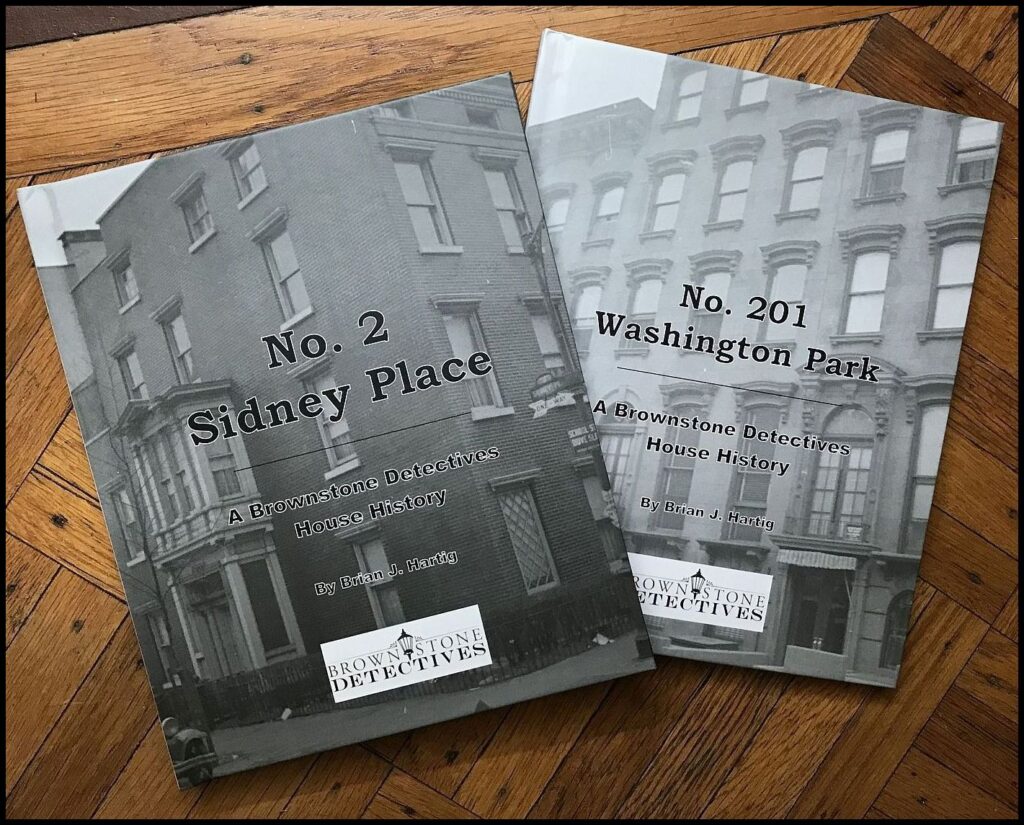 Brownstone Detectives is an historic property research agency. Our mission is to document and save the histories of our clients’ homes. From our research, we produce our celebrated House History Books and House History Reports. Contact us today to begin discovering the history of your home.
Brownstone Detectives is an historic property research agency. Our mission is to document and save the histories of our clients’ homes. From our research, we produce our celebrated House History Books and House History Reports. Contact us today to begin discovering the history of your home.